Unleashing the Horror: The Curse of Frankenstein Clothing Line
August 21, 2024
The world of classic horror is alive again, and it's coming to your wardrobe! We're thrilled to introduce our exclusive, limited edition clothing line inspired by the iconic 1957 Hammer film The Curse of Frankenstein. This collection is a celebration of gothic horror, legendary cinema, and timeless style, bringing the terror and beauty of this cult classic to life in a whole new way.
Horror isn't just a genre—it's a culture, a community, and for many of us, a way of life. With this clothing line, we're not just celebrating The Curse of Frankenstein; we're celebrating the enduring legacy of gothic horror and the impact it has had on art, fashion, and cinema. These pieces are more than just apparel—they're a way to connect with the past, express your love for the genre, and share your passion with the world.

As with all good things, this collection won't last forever. Each piece is part of a limited run, making them as rare as they are special. Whether you're looking to add to your horror collection, find the perfect gift for a fellow fan, or simply treat yourself to something unique, now is the time to act.
Don't miss out on your chance to own a piece of horror history—shop our limited edition The Curse of Frankenstein collection today and let the spirit of classic horror live on through your style.
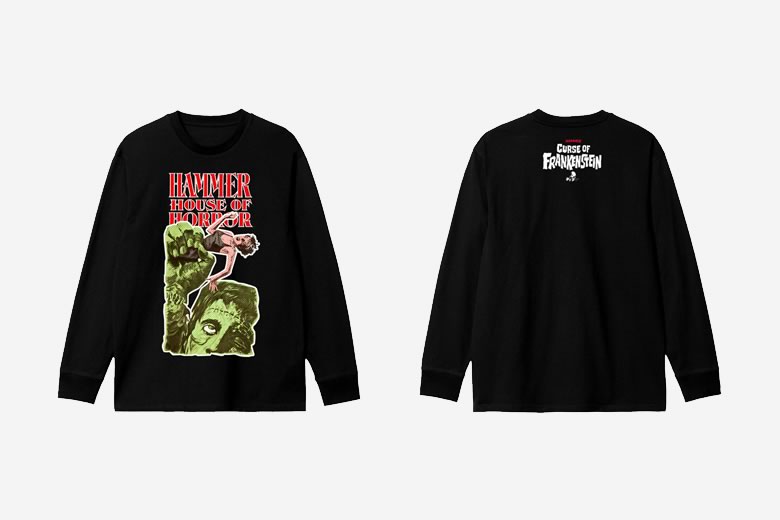
When we think of the Frankenstein mythos, our minds often drift to the black-and-white imagery of Boris Karloff's monster from the 1931 Universal film. But in 1957, a new, vibrant, and shocking retelling of Mary Shelley's classic breathed life into the tale once more, setting the stage for a new era in horror cinema. The Curse of Frankenstein, produced by Hammer Film Productions, was more than just a film; it was a cinematic revolution that would leave an indelible mark on the genre.
Directed by Terence Fisher, The Curse of Frankenstein was Hammer's first color horror film and the beginning of what would become a successful franchise that redefined gothic horror. The decision to shoot in color was bold and strategic. Gone were the moody shadows and stark contrasts of black-and-white; in their place were vivid reds, deep greens, and ghastly flesh tones. The use of color brought a visceral quality to the horror, making the blood more shocking, the decaying flesh more grotesque, and the overall atmosphere more intense.
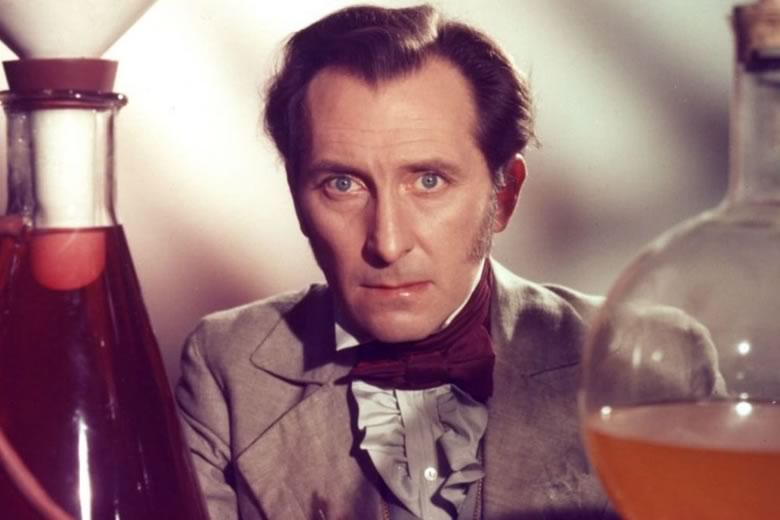
Hammer's take on the Frankenstein story was markedly different from its predecessors. While Mary Shelley's original novel focused on the moral and philosophical implications of playing God, The Curse of Frankenstein leaned heavily into the horror and macabre, making it more accessible—and terrifying—to mid-20th-century audiences.
Central to the film's success were the performances of Peter Cushing and Christopher Lee, two actors who would become synonymous with Hammer Horror. Cushing's portrayal of Baron Victor Frankenstein was cold, calculating, and disturbingly unhinged. Unlike earlier versions of the character, Hammer's Frankenstein was not a tragic figure tormented by his creations; he was a man obsessed with his work, willing to commit any atrocity in the name of science. Cushing brought a chilling precision to the role, making his Frankenstein as much a monster as the creature he assembled.
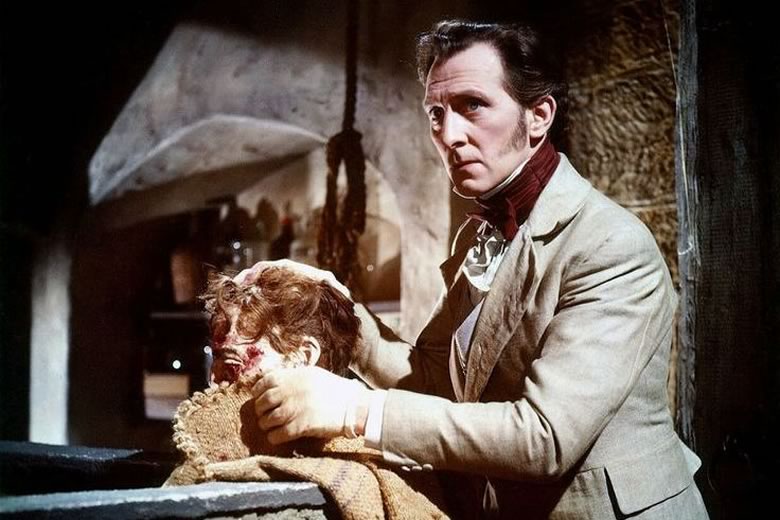
Christopher Lee's portrayal of the Creature was equally groundbreaking. Standing at 6'5", Lee cut an imposing figure, but it was his performance beneath the layers of grotesque makeup that made the role unforgettable. Unlike Karloff’s sympathetic monster, Lee's Creature was a horror to behold—a mute, murderous beast brought to life in a lab and unleashed on the world. Lee's physicality and intensity brought a raw, primal energy to the character, making him truly terrifying.
One of the most striking aspects of The Curse of Frankenstein is its rich gothic atmosphere. Hammer's production design team created a world that was both beautiful and eerie, filled with decaying castles, dark laboratories, and misty graveyards. The film's sets and costumes, combined with Fisher's direction, evoked the spirit of 19th-century gothic literature, but with a modern twist that made it fresh and exciting for contemporary audiences.
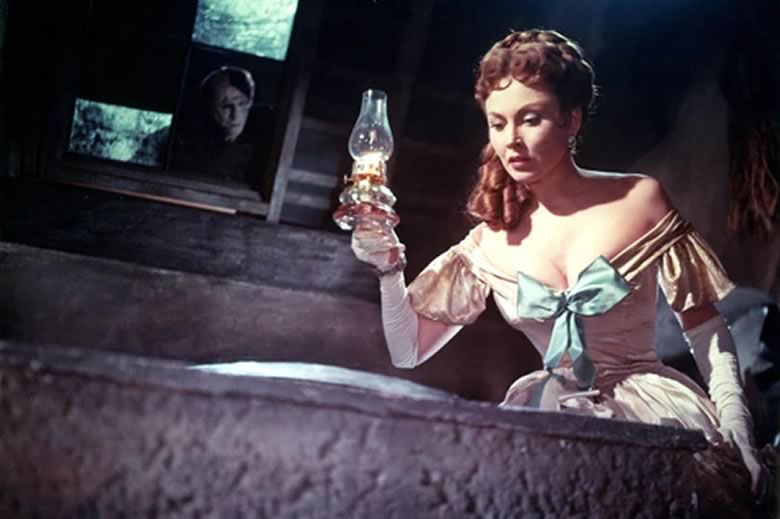
The film's score, composed by James Bernard, also played a crucial role in building tension and heightening the horror. Bernard's music was dramatic and unsettling, perfectly complementing the film's dark tone and adding another layer of intensity to the viewing experience.
The Curse of Frankenstein was a massive success, both critically and commercially, and it marked the beginning of Hammer's dominance in the horror genre. The film's success led to a series of sequels, each continuing the story of Baron Frankenstein's experiments with life and death. More importantly, it established a template for Hammer Horror: vivid color, gothic settings, and the iconic pairing of Cushing and Lee.
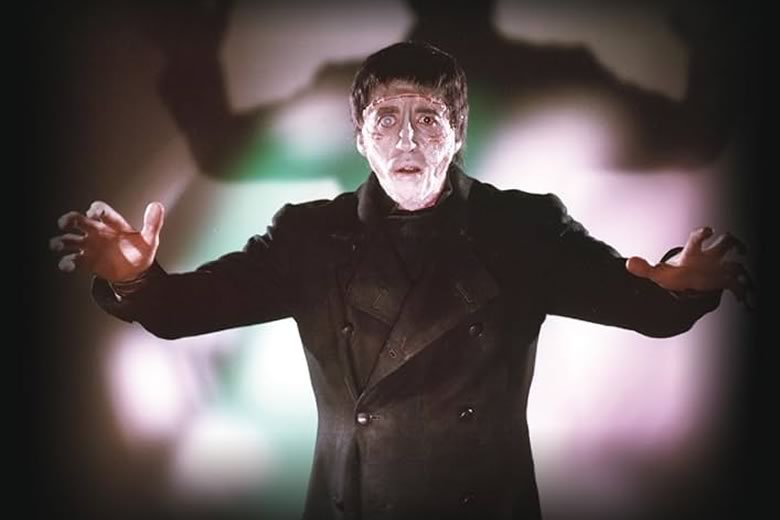
The influence of The Curse of Frankenstein can still be seen today. It paved the way for future horror films that embraced gore and shock value, while also showing that horror could be stylish, atmospheric, and well-acted. Hammer's films, starting with The Curse of Frankenstein, brought a new level of sophistication to the genre, proving that horror could be more than just cheap thrills—it could be art.
In conclusion, The Curse of Frankenstein is not just a classic horror film; it's a milestone in the history of cinema. It represents the birth of Hammer Horror and the beginning of a new era for the genre, one that would influence countless films and filmmakers for decades to come. For fans of horror, it remains a must-see, a film that captures the essence of gothic horror while pushing the boundaries of what the genre could achieve.

